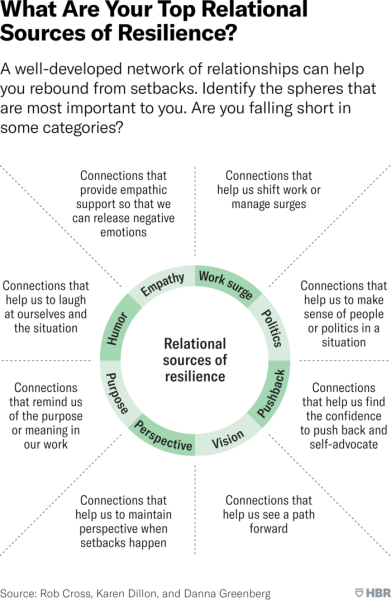
The History and Organizational Value of Resilience
Resilience among the Romans
Let’s explore resilience through a historical lens. Julius Caesar faced his first major defeat in Gaul in the Battle of Gergovia in 52 BCE, where he lost a significant number of troops and was forced to retreat. However, he quickly bounced back from this crushing defeat in several ways that we would recognize. Strategic retreat: He withdrew his troops and repositioned them to the nearby town of Avaricum, which he besieged and conquered.
This victory boosted the morale of his troops and demonstrated his tactical prowess. He was a master of propaganda and he used it to his advantage, sending reports back to Rome that downplayed the severity of his defeat and highlighted his successes in Gaul. This helped him maintain his political position and secure additional support from the Roman Senate.
He used his diplomatic skills to win over some of the Gallic tribes, convincing them to switch sides and join his army. This allowed him to increase his troop strength and gain important intelligence about the enemy. Despite his initial defeat, Caesar did not lose his confidence or his ambition. He continued to pursue his goals with determination and took bold actions that kept his enemies off balance. For example, after his defeat at Gergovia, he quickly marched his army to the opposite side of Gaul and launched a surprise attack on the city of Alesia, which he ultimately captured. Overall, the ability to learn from mistakes, adapting his strategy, and maintaining morale and ambition in the face of defeat were key factors in his ability to bounce back from his first defeat in Gaul.
You could say that he used his management skills: strategy, diplomacy, partnering, propaganda, focus, confidence, and learning to overcome a challenging situation that demanded extreme resilience. But he could do this because of his resilience. The root of the word resilience is “resilire” which is a Latin word that means “to bounce back” or “to recoil”. This root word is composed of two parts: “re-“, which means “back” or “again”, and “salire”, which means “to jump” or “to leap”. So, the original meaning of resilience was related to the ability to spring back or rebound from a difficult situation, much like a ball that bounces back after being thrown against a hard surface.
Historical examples of Resilience
There are many more historical examples of extreme resilience in the face of adversity that demonstrate the power of resilience in overcoming adversity and achieving great things. Many of the names below have become prime examples when discussing resilience.
Nelson Mandela was a South African anti-apartheid revolutionary and politician who spent 27 years in prison. During his time in prison, he demonstrated extreme resilience by maintaining his resolve and continuing to fight for his beliefs. He remained committed to the struggle against apartheid and emerged from prison to become the first black president of South Africa.
Anne Frank was a young Jewish girl who spent two years hiding from the Nazis in Amsterdam during World War II. Despite the constant fear and uncertainty she faced, Anne maintained a positive attitude and a strong will to survive. She wrote about her experiences in her famous diary, which still is a powerful symbol of resilience and hope.
Louis Zamperini was an American Olympic runner who became a prisoner of war during World War II. He spent 47 days at sea after his plane crashed in the Pacific Ocean, and then spent more than two years in Japanese prison camps, where he endured brutal treatment and torture. Despite his hardships, he never gave up, and his resilience helped him survive and eventually return home.
Malala Yousafzai is a Pakistani activist for women’s education and the youngest Nobel Prize laureate. She survived an assassination attempt by the Taliban at the age of 15 and went on to become a leading voice for girls’ education around the world. Despite the risks and challenges she faced, she never wavered in her commitment to her cause, and her resilience has inspired millions of people around the world.
In a fast-paced and ever-changing work environment, the ability to adapt and bounce back from setbacks is essential. This is where resilience comes in and becomes almost a skill. Resilience is the capacity to cope with stress, adversity, and change in a positive way, and it’s becoming increasingly important in the workplace. The COVID-19 pandemic forced organizations to take a hard look at resilience, as employees have had to navigate the new challenges and uncertainty.

Bouncing Back in HR: The Organizational View
In today’s world resilience is mainly used to describe the ability to recover from setbacks or difficulties, and to adapt to challenging, changing circumstances. It provides the ability to bounce back from adversity, to recover from setbacks. Resilience is an important quality for HR professionals because it helps them cope with change and stress, build trust, and enhance creativity and innovation, and lead by example.
HR professionals who are resilient are better able to handle difficult conversations, provide support to employees in crisis, and maintain a positive attitude in the face of challenges. Resilient HR professionals are better equipped to cope with the stresses and uncertainty that come with transformation or change, and to help others in the organization navigate these transitions. There are several reasons why resilience is important in HR and why organizations can benefit from recognizing how resilience can help to adapt to changes and challenges:
- Coping with Change: The HR function is often at the forefront of organizational change. This can include mergers and acquisitions, innovation, reorganizations, and new initiatives.
- Dealing with Stress: HR professionals deal with many stressful situations, such as conflicts, employee grievances, and performance management issues.
- Building Trust: Resilience is a key component of emotional intelligence, which is critical to building trust and strong relationships.
- Enhancing Creativity and Innovation: Resilience is associated with greater creativity and innovation. Resilient HR professionals tend to think more creatively and find innovative solutions to problems.
- Facilitating Resilience: resilient individuals and teams are better able to manage stress, and are less likely to experience burnout or other negative outcomes.
In the context of Human Resources, resilience is an important quality for both individual employees and the organization as a whole. Indeed the one cannot be seen separate from the other. They are both sides of the same coin.
Bouncing Back in Employees: The People View
Resilience is important for employees because it allows them to adapt and cope with the challenges and changes that they may face in their work environment. In today’s fast-paced and constantly evolving workplaces, workers who are resilient are better equipped to handle stress, setbacks, and adversity, and are more likely to bounce back from difficult situations.
They are also better able to maintain their productivity and focus during times of uncertainty or change, which can be especially important in high-pressure work environments. They are more likely to stay committed to their work, even in the face of setbacks or challenges, and are better equipped to manage their emotions and maintain positive relationships with colleagues and supervisors.
In addition, research has shown that resilience is associated with improved job satisfaction and overall well-being, both of which can have positive impacts on an individual’s personal and professional life. Overall, cultivating resilience can help workers develop a strong sense of adaptability and flexibility, which can be valuable assets in any work setting.
Biases connected to resilience
Here are some of the biases connected to resilience:
Survivorship bias: Survivorship bias is the tendency to focus only on the people or things that have survived or succeeded, and to ignore those that have failed or been lost along the way. In the context of resilience, survivorship bias can lead us to overestimate the resilience of people who have overcome adversity, without considering the many others who may have faced similar challenges but did not succeed.
Attribution bias: Attribution bias is the tendency to attribute success or failure to personal characteristics rather than external factors. In the context of resilience, attribution bias can lead us to assume that people who have overcome adversity must have some innate quality or strength that enabled them to do so, rather than recognizing the role of external factors such as social support, access to resources, or luck.
Confirmation bias: Confirmation bias is the tendency to seek out information that confirms our existing beliefs or assumptions, and to discount information that contradicts them. In the context of resilience, confirmation bias can lead us to overlook or discount evidence that challenges our beliefs about what makes people resilient or the factors that contribute to their success.
Optimism bias: Optimism bias is the tendency to overestimate the likelihood of positive outcomes and to underestimate the likelihood of negative outcomes. In the context of resilience, optimism bias can lead us to assume that people will always bounce back from adversity, without considering the real risks and challenges they may face, or the potential long-term effects of their experiences.
It is important to recognize these biases and to strive for a more balanced and nuanced understanding of resilience and the factors that contribute to it.

Resilience and innovation
One example of an innovation that was brought about by resilience is the development of the solar-powered lamp. In many parts of the world, access to electricity is limited or unreliable, which can make it difficult for people to study, work, or perform household tasks after dark. This can have negative impacts on education, health, and economic opportunities, particularly for women and girls.
In response to this challenge, several organizations and individuals developed solar-powered lamps that can be charged during the day and used to provide light at night. These lamps are often small, portable, and affordable, making them accessible to people in even the most remote and impoverished communities. They can also be used for a range of activities, from cooking and reading to working on crafts or other projects.
The development of the solar-powered lamp is an example of how resilience and innovation can work together to address a pressing social and environmental challenge. By leveraging existing technologies and resources in new and creative ways, individuals and organizations were able to create a solution that has the potential to improve the lives of millions of people around the world.
Resilience is a complex trait
It’s important to note that resilience is not an all-or-nothing trait, and that everyone has the potential to develop greater resilience over time. By cultivating positive coping strategies, building strong social connections, and seeking out supportive resources when needed, people can enhance their resilience and better cope with the challenges and uncertainties of life.Resilience is a complex trait that is influenced by a variety of factors, including genetics, environment, life experiences, and personal characteristics. Here are some reasons why some people may be more resilient than others:
Genetics: Some studies have suggested that there may be a genetic component to resilience, meaning that some people may be born with a natural predisposition to bounce back from adversity.
Environment: The environment in which a person grows up can also influence their resilience. Factors such as poverty, violence, and discrimination can make it harder for people to develop resilience, while supportive and nurturing environments can promote resilience.
Life experiences: Life experiences, particularly early life experiences, can have a significant impact on resilience. Adverse childhood experiences such as abuse, neglect, or exposure to trauma can make it harder for people to cope with stress and adversity later in life, while positive experiences such as a stable home environment or strong social support can promote resilience.
Personal characteristics: Certain personal characteristics, such as optimism, self-efficacy, and a sense of purpose, have been linked to resilience. People who have these traits may be better able to cope with stress and adversity and to find meaning and purpose in difficult situations.
Resilience in Change Management
Resilience can play a key role in change management by helping individuals and organizations adapt to new situations, overcome obstacles, and maintain a sense of purpose and direction. Resilience can help with change management:
Coping with uncertainty: Change often brings uncertainty, and the ability to cope with that uncertainty is a key component of resilience. Resilient individuals and organizations are better able to tolerate ambiguity and adapt to new situations, which can help them navigate the ups and downs of the change process.
Overcoming obstacles: Change often brings new challenges and obstacles, and resilience can help individuals and organizations overcome these barriers. Resilient people are better able to persist in the face of setbacks, and to find creative solutions to difficult problems.
Maintaining focus and purpose: Change can be distracting and disorienting, but resilience can help individuals and organizations stay focused on their goals and purpose. Resilient people are better able to maintain a sense of direction and purpose, even in the face of uncertainty and disruption.
Building relationships and support: Resilience is often built on strong social connections and support networks, and these relationships can be particularly important during times of change. Resilient individuals and organizations are better able to build and maintain supportive relationships, which can provide a sense of belonging and help them weather the challenges of the change process.
Overall, resilience can help individuals and organizations approach change with a more positive and proactive mindset, and can enable them to adapt and thrive in the face of uncertainty and disruption. By cultivating resilience, change leaders can create a more resilient and adaptive organizational culture, and better position their teams for success in the face of ongoing change and transformation.
For more on resilience read our other blog on this topic: Building Resilience and its Effect on Performance. Or watch 100+ videos on our Youtube channel!
About Neurofied
Neurofied is a behavioral science company specialized in training, consulting, and change management. We help organizations drive evidence-based and human-centric change with insights and interventions from behavioral psychology and neuroscience. Consider us your behavioral business partner who helps you build behavioral change capabilities internally.
Since 2018, we have trained thousands of professionals and worked with over 100 management, HR, growth, and innovation teams of organizations such as Johnson & Johnson, KPMG, Deloitte, Novo Nordisk, ABN AMRO, and the Dutch government. We are also frequent speakers at universities and conferences.
Our mission is to democratize the value of behavioral science for teams and organizations. If you see any opportunities to collaborate, please contact us here.